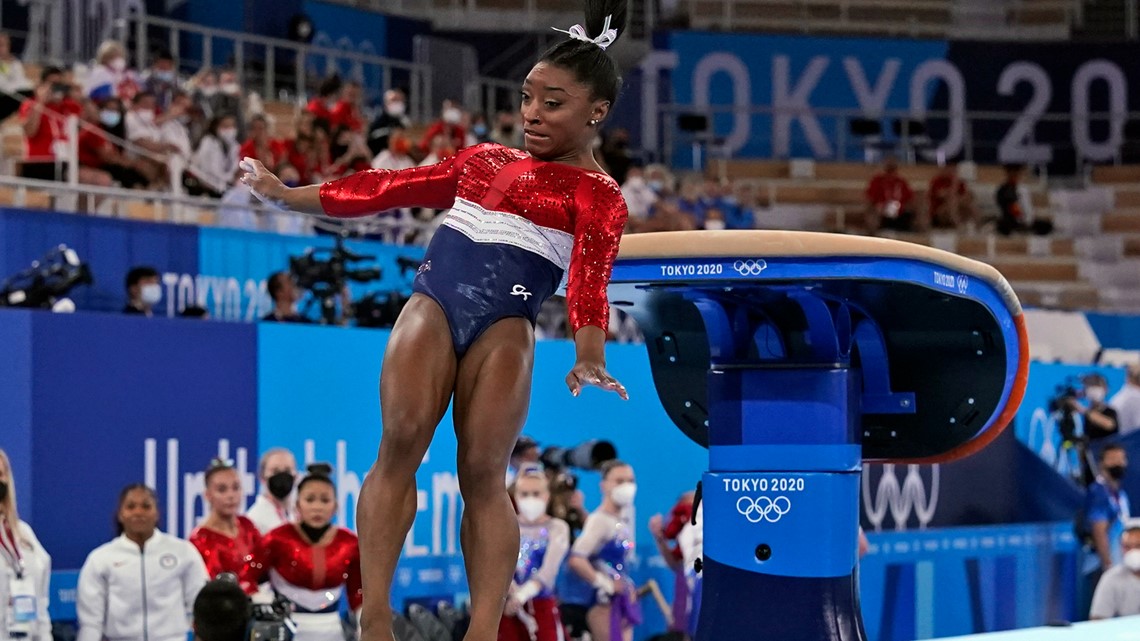
Simone Biles bowed out of competitions in Tokyo citing mental health, but for gymnasts, a lack of mental clarity can put them in serious physical danger.
TOKYO, Japan — Fear and mental clarity can knock anyone off balance. But, for a gymnast, being off by just an inch can mean life-threatening injuries.
Simone Biles chose to leave the Olympic team finals Tuesday after an uncharacteristic performance on the vault. Her plan was to perform a move requiring 2 and 1/2 twists. She instead was able to get through 1 and 1/2 twists in the performance, with a deep step forward, surprising the judges who along with everyone had placed a lot of pressure on the American gymnastics star.
Biles left after the event, saying she was looking forward to “mental rest.” She later told reporters, “I just don’t trust myself as much as I used to.”
But along with a renewed need to focus on consciousness, there was also a need to protect herself from physical harm. For a gymnast, fear, or their psychological state, can put them in danger. If the brain doesn’t follow what the body was trained to do, it can end in significant injury.
“It’s the Olympic Games,” Biles said, “But at the end of the day, it’s like, we want to walk out of here, not be dragged out here on a stretcher,” CNN reported.
Gymnasts have a list of slang words they use to describe states like this which would be hard for many to fully understand. The fear associated with high pressure performances is known as the “twisties.”
What are the ‘twisties?’
After withdrawing from the women’s team event, Biles told reporters she was “having a little bit of the ‘twisties’” in practice.
The “twisties” are a frightening phenomenon for gymnasts. The term means that one’s rhythm is off, and the athlete’s mind won’t allow them to complete a trick.
“Your brain will like stutter step for half a second and that’s enough to throw off the whole skill,” gymnast Laurie Hernandez told Olympics.com.
In practice, gymnasts can overcome the twisties in a safer environment. They can do twists in a foam pit, until they feel more comfortable.
But, the Tokyo Olympic Games have provided limited equipment and mats for practice, which means there’s not a foam pit, and there’s not safe spaces to practice routines.
Launching off of a vault, bar or beam, into a flip in the air multiple times is a challenge even for the best athletes in the sport. If a gymnast’s mind cannot commit to the move, it could put their body in great danger.
CNN noted how At the 2017 American Cup, Riley McCusker’s had a foot placement which was off only by about an inch on the beam dismount, which caused her to land backwards on her neck and roll over it.
The term speaks more to the idea that instinct is being replaced by too much thought in the mind, which leads to worrying.
“Simply, your life is in danger when you’re doing gymnastics,” Sean Melton, a former gymnast who experienced the twisties told the Washington Post. “And then, when you add this unknown of not being able to control your body while doing these extremely dangerous skills, it adds an extreme level of stress. And it’s terrifying, honestly, because you have no idea what is going to happen.”













































